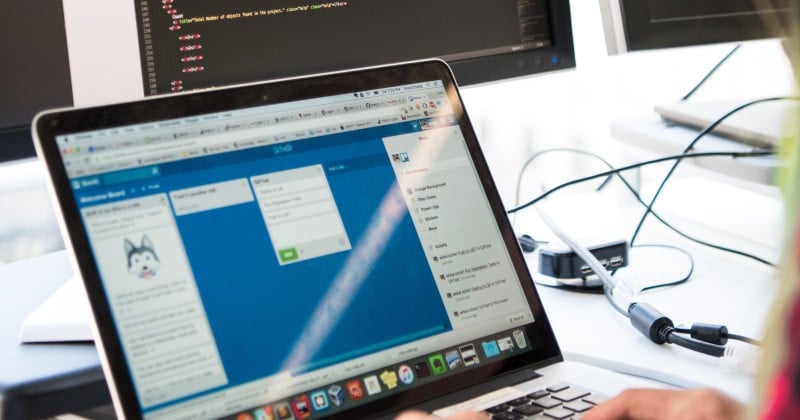Updated: May 6, 2024- 10 min read
In an era where product innovation is both the lifeline and the challenge for companies, wouldn't you love a tool that bridges the gap between the digital and physical scenarios, ensuring efficient and cost-effective product development? This is when digital twins come in handy.
Digital twins are proving to be the golden bridge between digital dreams and tangible realities. As per McKinsey, an eye-popping $30 trillion in corporate revenue over the next five years depends on products yet to hit the market. Digital twins, virtual replicas of products, are poised to streamline this process, with the market for this technology expected to soar to a whopping $73.5 billion by 2027.
Future proof your team and discover how we can help you build Product excellence in your organization
Dive into this post to understand how digital twins are transforming industries, the strategies to adopt them effectively, and the astounding benefits they bring to the table.
What are digital twins?
At its core, a digital twin is a virtual reflection of a system's behavior within its operational sector. Whether you're picturing a tangible product, a manufacturing workflow, or a sprawling supply chain, imagine its essence distilled into a series of digital models.
These models actively respond to several stimuli, made up of data that embodies the external environment. It's this union of several models and diverse data streams that empowers digital twins to eclipse traditional simulation methodologies, painting a closer portrait of real-world entities.
Now, let's narrow our lens to the domain of product digital twins. They stand distinguished by three critical facets: the depth of modeling and the caliber of data integration, the physical breadth covered by the twin, and the segments of the value chain they encapsulate.

Let's unpack their dimensions together.
1. Value chain integration
Every product has a life cycle. Digital twins illuminate each phase:
Engineering
Here, the digital twin encapsulates everything from the initial spark of product conception right through to its validation and the eventual nod for manufacturing
Production
The twin isn't just about the end product. It dives into the product's systems and components, providing a microscopic view.
Service
The journey doesn't end after manufacturing. Digital twins shadow a product from the point of sale, through its lifespan, and even into recycling or end-of-life phases.
2. Scope of reflection
Zoom in and out of a product and witness the digital twin's chameleonic adaptability.
Component
At the granular level, digital twins can mimic a solitary element within a product, no matter how simple.
System
Ascend a layer, and you find a digital twin representing a conglomerate of components, interacting to deliver specific functionality.
Product
At its zenith, the twin mirrors an entire product, holistically capturing all its systems and sub-systems.
3. Sophistication Spectrum
Digital twins aren't static. They evolve, mirroring the complexity of their real-world counterparts.
Data foundation
This is the foundation, where diverse data sources converge, knitting a coherent digital narrative.
Traditional simulation
Here, the twin leverages simulation tools, assessing design performance with analytical precision.
Learn more about Data in Product Management
Learn how data analytics can improve Product Management and make informed decisions with our Data-Driven Product Management: Using Analytics To Make Better Product Decisions post.
Read more
Automated design refinement
Venturing into the future, this layer harnesses predictive analytics and machine learning, running auto-simulations to refine and optimize results without human intervention.
Closed-loop deal-world link
The pinnacle of sophistication. Digital twins here employ multiple avant-garde simulation models, which dynamically respond to shifting environments. They are constantly updated with tangible data from manufacturing floors and testing labs.
From basics to mastery: The digital twin progression
Picture yourself using the digital twin of an app's user interface. Initially, the focus could solely be on the landing page - its design, its responsiveness, and how users interact with it. By optimizing this initial representation, you can ensure seamless user experiences and rectify potential pitfalls early in the process.

But, as you delve deeper, the digital twin could expand to encompass the entire user journey, simulating navigation paths, user behaviors, and touchpoints. Eventually, a comprehensive representation emerges, reflecting every element of your app, from backend processes to user-centric features.
Moreover, as you go across the value chain, the scope can shift from merely enhancing the user interface to optimizing the underlying algorithms. Take renowned streaming services, for example. They began by leveraging digital twins to simulate and refine user interfaces. Today, these platforms use sophisticated digital replicas to predict user preferences, optimize content delivery, and even tailor marketing strategies.
Shifting to the world of e-commerce, giants like Amazon and Alibaba didn't just stop at simulating the shopping experience. They extended their digital twin practices to understand warehouse logistics, and supply chain dynamics, and even predict market trends.
This progression showcases the versatility and potential of the digital twin technology. Starting from the microscopic to achieving a macroscopic view, you can harness these virtual representations to continually refine, innovate, and stay ahead of the curve.
So, when you contemplate your digital twin strategy, be mindful of the starting point as well as the immense possibilities ahead.
Challenges and strategies
Early birds in this field have cited integration hitches, from melding digital twin technologies into their pre-existing digital product scenario to broader IT alignment pains.

On top of that, employing digital twins isn't just about the tech—it shifts the entire work ethos, spanning from R&D to even broader functions. Hence, leading a fruitful digital twin initiative means championing a transformative effort. You need a mix of top-tier managerial backing, vigilant program governance, and a robust framework that champions milestones while fostering new methodologies.
1. Crafting a phased adoption game plan
To sidestep potential pitfalls, a structured, phased roll-out of the digital twin model is recommended:
Competitive intelligence and scoping
Begin by dissecting the available digital twin solutions in your domain. Assess the potential advantages of each. Deep diving into other firms' campaigns into digital twins can lend pivotal insights, acting as a roadmap for your transformation.
Architecture design and software stack blueprinting
Here, pinpoint the precise software components and interfaces that align with your digital twin vision. Craft a stack interweaving current digital tools with fresh additions, deliberating whether in-house development or external acquisition suits best.
Software development excellence
In this stage, streamline the procedures and expertise crucial for creating, amalgamating, and launching your digital twin infrastructure.
Keep in mind that you'll need a diverse talent pool, from system engineers for pinpointing necessities to analysts for model fabrication.
2. Structuring your digital twin team
To weave digital twin tech into your corporation, pick one of three potential configurations:
Business unit model
Establish a distinct digital twin-focused business unit, crafting its unique digital asset collection, pitched alongside its tangible counterparts.
Integrated business unit model
Combine the digital twin contingent into a current business division, concentrating on churning out digital twin solutions synced with that unit's offerings. Ideal for those dipping their toes in the digital twin waters or scenarios where limited cross-unit synergies don't warrant a standalone division.
Center of excellence model
Carve out a distinct center of excellence, underpinning application development within existing sectors. This model is tailor-made for swift digital twin scale-ups, ensuring a uniform tech and procedural landscape.
Pioneering progress: The digital twin revolution
Let's discuss digital twins' potential to revolutionize product development across sectors. Consider the challenge of creating highly specialized products, such as advanced manufacturing equipment. These items aren't mass-produced; they're either one-of-a-kind or made in limited batches.

Every piece involves a lot of engineering input from the start. Without prototypes, the traditional process often ends up with a final product needing adjustments after it's been delivered.
What if there was a smoother, more efficient way? Integrating digital twin technology early in the product development process changes everything. It not only speeds up and refines the process but also fosters a closer connection with customers.
A company with a solid digital twin setup can simulate the entire product in a virtual space, making sure it's perfect before the customer even sees it. Companies can keep a digital library of components, combining old and new as needed. This not only saves time but also ensures consistent quality in every product.
The impact of this approach is multi-fold, here are some of its benefits:
1. Customer engagement
This comprehensive digital twin isn't just a developmental tool. It doubles up as an interactive presentation medium, elucidating the proposed solution's nuances and verifying its alignment with the customer's aspirations.
2.Knowledge bank
Post this developmental phase, these new component models become valuable additions to the digital library. They're not one-off designs but potential keystones for upcoming projects with resonating requirements.
Embracing the power of digital twins in product development today
Survey data from advanced sectors reveals that a whopping 75% of firms have jumped on board, integrating digital-twin technologies of at least moderate intricacy into their workflows.

The automotive, aerospace, and defense sectors are leading the charge, fine-tuning digital twin practices to drive innovation. Meanwhile, industries like logistics, infrastructure, and energy are still dipping their toes, conceptualizing their digital twin strategies.
On the European frontier, a software behemoth is crafting a detailed multiphysics rendition of our human heart. It's not for show. This cutting-edge digital twin aids drug discovery and tailors medical device innovation.
Stateside, a renowned automotive manufacturer is constructing a holistic system that mirrors every software and hardware configuration they provide. This isn't mere replication; the intention is to simulate design enhancements and refine them even before they reach customers through over-the-air updates.
But why are these industry leaders so invested? Well, the incentives are manifold:
1. Data-driven design enhancements
With real-world data at their disposal, engineers can stimulate potential design shifts, leaning on insights gleaned from products in active operation.
2. Haven for innovation
Digital twins foster an environment devoid of risks for product development. Teams can play around, experiment, and choose designs without the financial implications of crafting physical prototypes.
3. Deep product behavior insights
With these models, it's feasible to scrutinize any system segment at any time. It demystifies complex product element interactions.
4. Rigorous testing and validation
Digital twins empower teams to evaluate novel solutions across multifaceted, lifelike scenarios – even those on the fringes of operational extremities.
The results are tangible. Conversations with R&D veterans underscore the transformative potential of digital twins. They've slashed development durations by as much as half for some, simultaneously trimming costs.
The need for pricey preproduction prototypes has dwindled, sometimes from multiple to a singular one. And, given the expansive scope of virtual testing and validation, products borne out of digital twins are notably superior in quality upon production inception.
This also translates to commercial success, with certain firms witnessing a 3-5% sales surge for products rooted in digital twins. This is attributed to enhanced features, impeccable quality, and sky-high customer contentment levels.

Integrating a digital twin during product genesis, means you're not merely ensuring top-tier product delivery, but you're setting the stage for several post-market services, be it predictive maintenance or performance refinement, which can amplify revenues by up to 10% in select product niches.
So, product leaders, where does your organization stand in the digital twin spectrum? Are you ready to harness this game-changing technology and propel your product development to unprecedented heights?
The future beckons
Digital twins are bridging the gap, tapping into the newest leaps in IoT and AI. As these technologies sprint ahead, expect digital twins to be hot on their heels.
Collaborative digital twin interactions could simulate intricate scenarios like urban transportation networks or multifaceted engineering supply chains. The pinnacle? Self-reliant digital twins that learn, evolve, and autonomously propose product enhancements.
Updated: May 6, 2024




